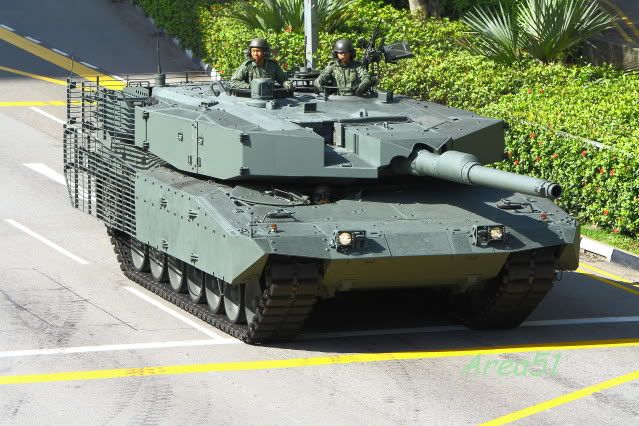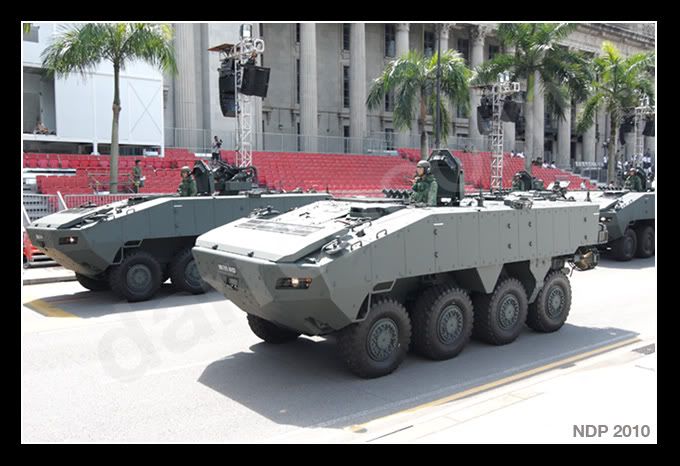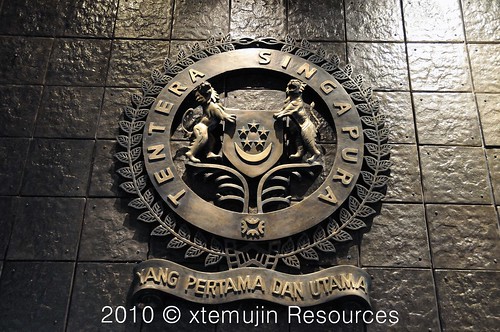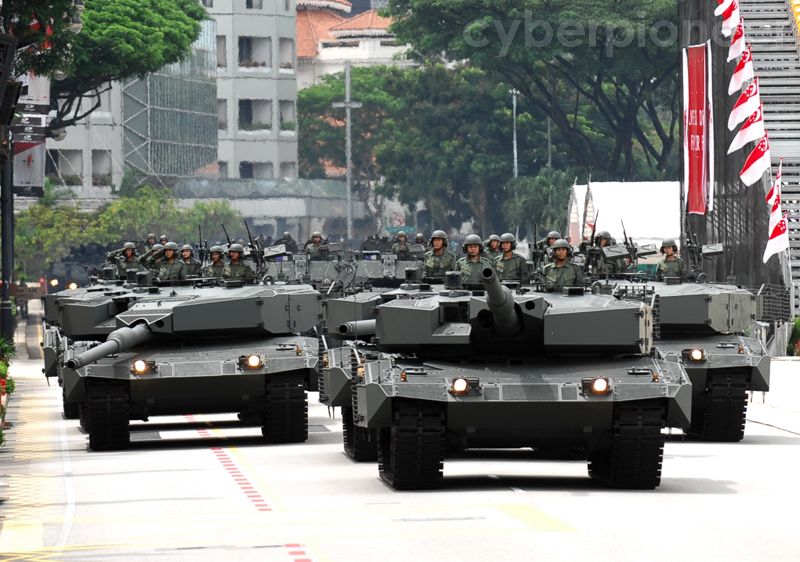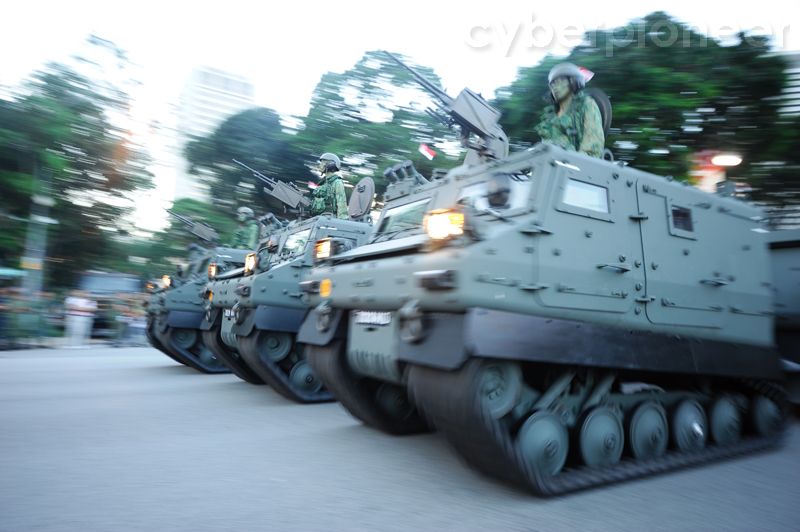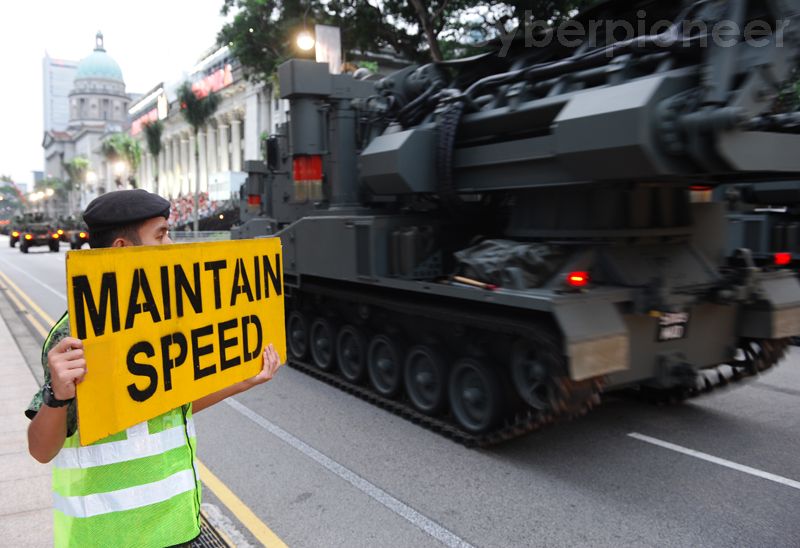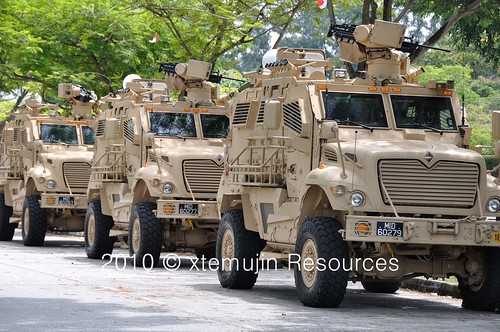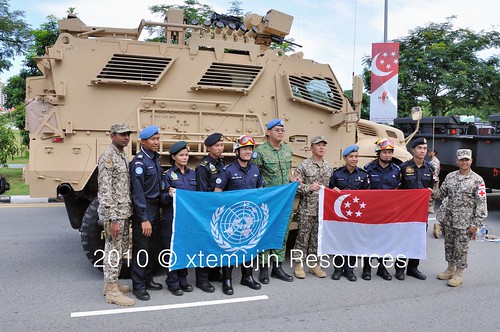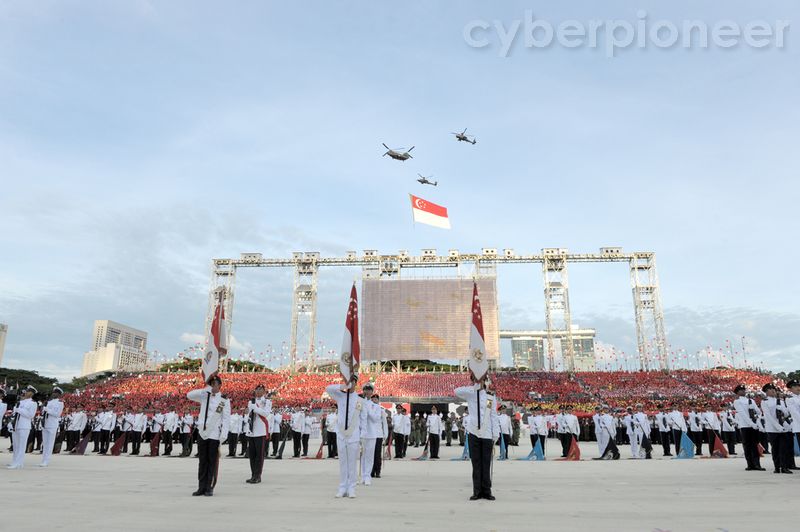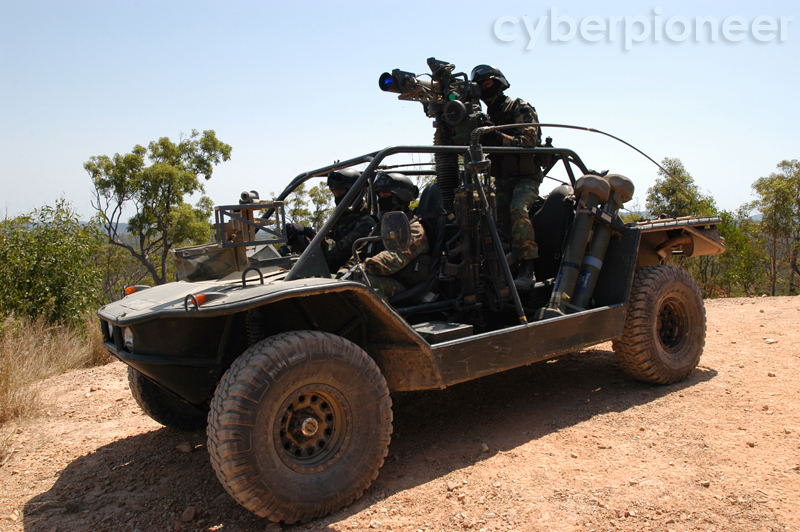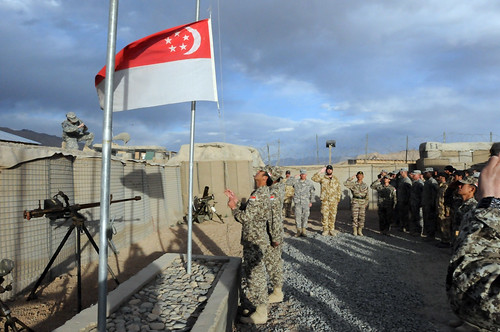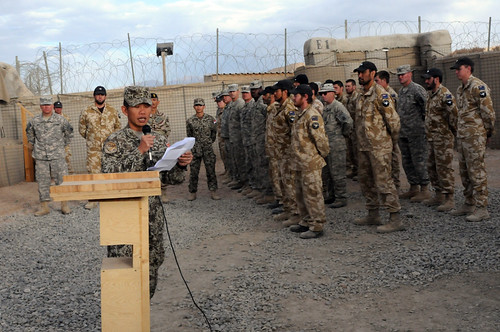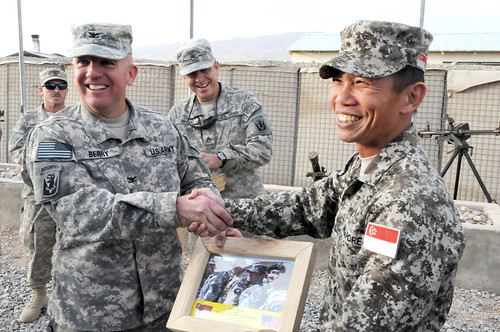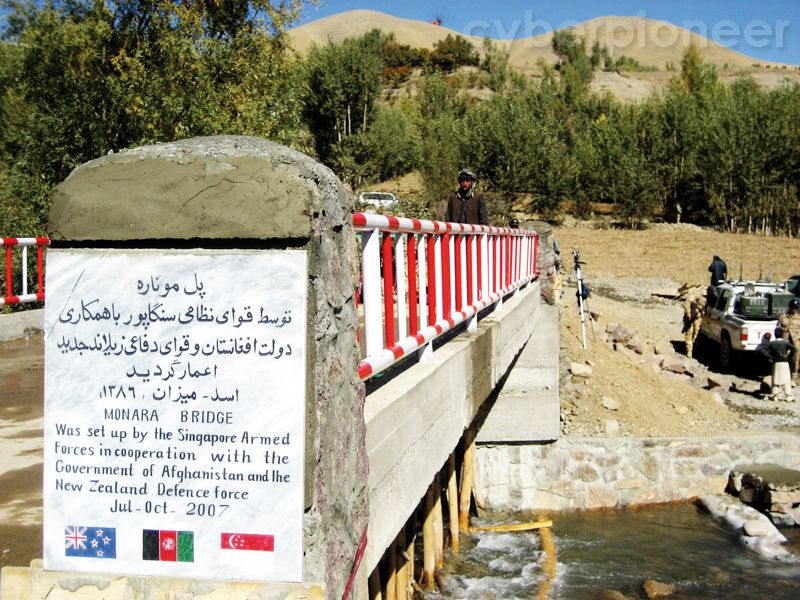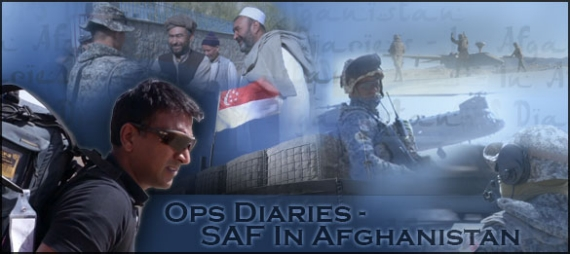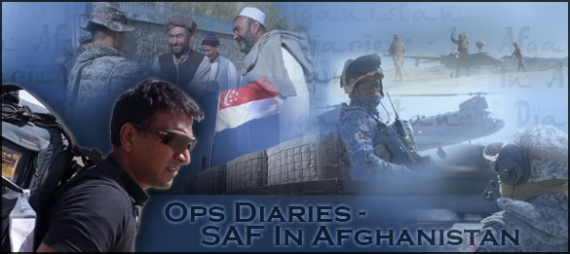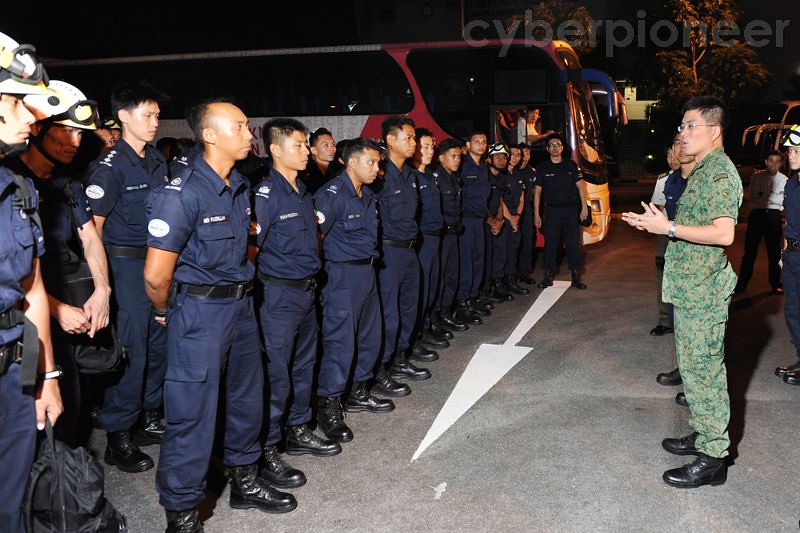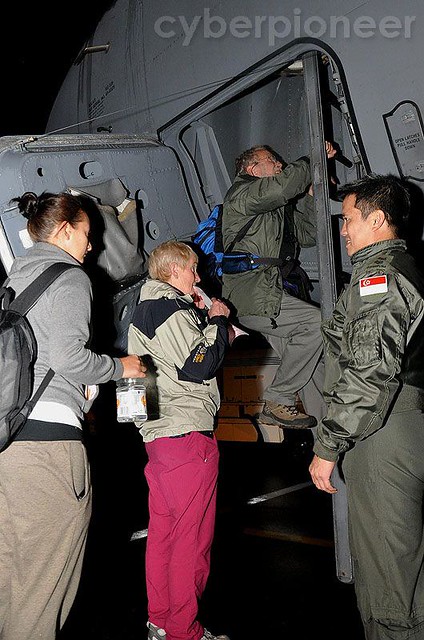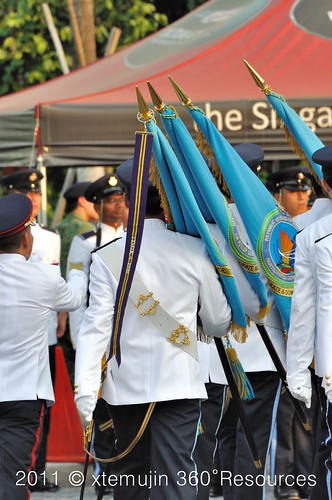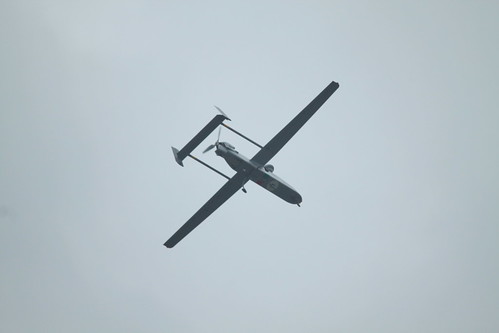Pixs of Leopard 2 Tanks in the Singapore Armed Forces (SAF)
According to the original Mindef announcement in Dec 2006, Singapore initially acquired 66 refurbished Leopard 2A4s + 30 spare tanks (which adds up to 96 tanks). Depending on how you interpret a 2007 newspaper report, it could mean that Singapore acquired 96 +36 Leopard 2A4 tanks (for a total of a 132 tanks), while there are others in Singapore who believe that the actual numbers for the 2A4s are 66+36 (for a total of a 102 tanks) and the 30 spare tanks are actually other variants like the Buffel ARV shown in the next post below. Interestingly, SIPRI data suggests that Singapore ordered 110 Leopard 2A4s and Buffel Armoured Recovery Vehicles (ARVs) - which could potentially mean 102 Leopard 2A4s and 8 Buffel ARVs (thought that is unlikely). For more comparative data see the SIPRI thread in DT here.
In the November 2008 issue of ADJ, the then MG Neo Kian Hong (and current CDF) also said the the Leopard 2A4s would be upgraded and below are pictures of the Leopard 2A4 upgrade (see post #51 in another DT pix thread for more info).
Top view of the Leopard 2A4 and the uparmoured version side by side
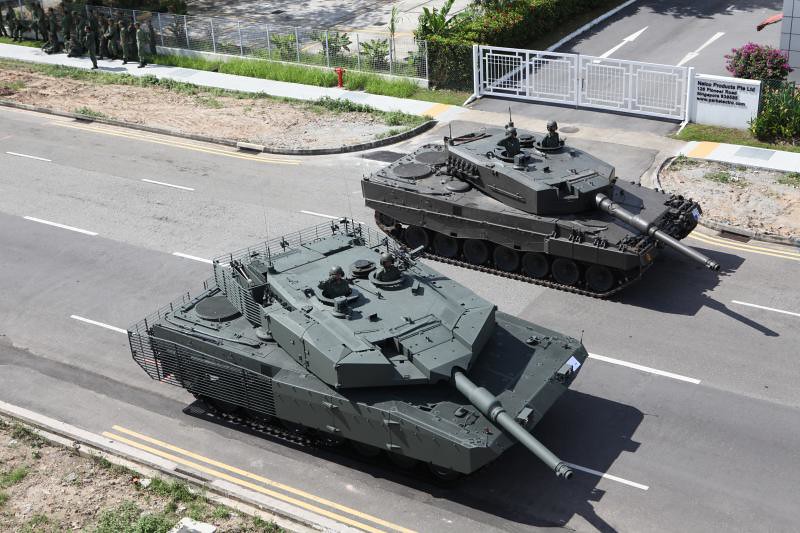
Side View of the uparmoured Leopard 2-SG
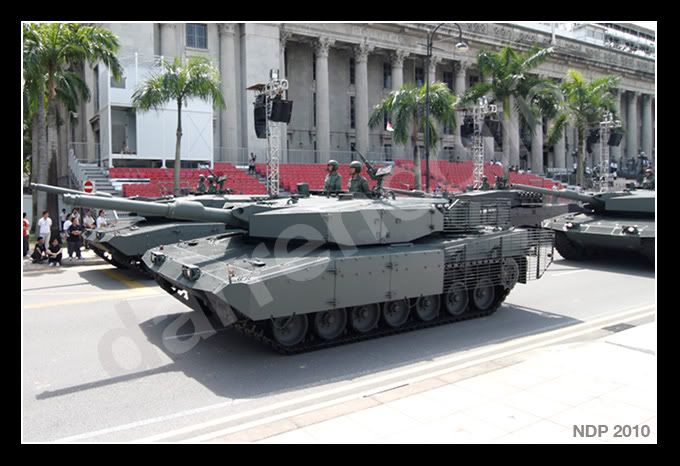
Waylander has noted that IBD said that they developed this for one special customer and weasel1962 has also pointed out the similarities found in the hinge mechanism of the AMAP(Advanced Modular Armour Protection) system by IBD.

I note that in Nov 2008, I posted a link at post #48 of another thread that showed a ST Kinetics (STK) made Bronco with Active Defense System AMAP-ADS and Multi-Purpose IED-Protection on display EUROSATORY 2008 (click on link for 2008 IBD news).
Videos of Singapore 2010 National Day Parade (NDP) rehearsals - mobile column
[h/t to spiderweb6969, owd33, XaberXV-25, weasel1962, gary1910 and xtemujin of the milnuts gang]
In an April 2010 interview with Defence News, Singapore's DPM Teo Chee Hean revealed that Singapore spends about 4.5 percent of GDP on defence) and the Singapore 2010 budget for defence set at S$11.46 billion dollars (or US$8.13 billion).
Hopefully the other Singaporean members will come here and post more pixs.
According to the original Mindef announcement in Dec 2006, Singapore initially acquired 66 refurbished Leopard 2A4s + 30 spare tanks (which adds up to 96 tanks). Depending on how you interpret a 2007 newspaper report, it could mean that Singapore acquired 96 +36 Leopard 2A4 tanks (for a total of a 132 tanks), while there are others in Singapore who believe that the actual numbers for the 2A4s are 66+36 (for a total of a 102 tanks) and the 30 spare tanks are actually other variants like the Buffel ARV shown in the next post below. Interestingly, SIPRI data suggests that Singapore ordered 110 Leopard 2A4s and Buffel Armoured Recovery Vehicles (ARVs) - which could potentially mean 102 Leopard 2A4s and 8 Buffel ARVs (thought that is unlikely). For more comparative data see the SIPRI thread in DT here.
In the November 2008 issue of ADJ, the then MG Neo Kian Hong (and current CDF) also said the the Leopard 2A4s would be upgraded and below are pictures of the Leopard 2A4 upgrade (see post #51 in another DT pix thread for more info).
Top view of the Leopard 2A4 and the uparmoured version side by side

Side View of the uparmoured Leopard 2-SG

Waylander has noted that IBD said that they developed this for one special customer and weasel1962 has also pointed out the similarities found in the hinge mechanism of the AMAP(Advanced Modular Armour Protection) system by IBD.

I note that in Nov 2008, I posted a link at post #48 of another thread that showed a ST Kinetics (STK) made Bronco with Active Defense System AMAP-ADS and Multi-Purpose IED-Protection on display EUROSATORY 2008 (click on link for 2008 IBD news).
Videos of Singapore 2010 National Day Parade (NDP) rehearsals - mobile column
(i) [nomedia="http://www.youtube.com/watch?v=hvH47ulDNAM"]NDP 2010 Mobile Column Rehearsal @ Tuas - YouTube[/nomedia]
(ii) [nomedia="http://www.youtube.com/watch?v=XTUv1U3eEYM"]YouTube[/nomedia]
(ii) [nomedia="http://www.youtube.com/watch?v=XTUv1U3eEYM"]YouTube[/nomedia]
[h/t to spiderweb6969, owd33, XaberXV-25, weasel1962, gary1910 and xtemujin of the milnuts gang]
In an April 2010 interview with Defence News, Singapore's DPM Teo Chee Hean revealed that Singapore spends about 4.5 percent of GDP on defence) and the Singapore 2010 budget for defence set at S$11.46 billion dollars (or US$8.13 billion).
Hopefully the other Singaporean members will come here and post more pixs.
Last edited:

